| Weight | 1 lbs |
|---|---|
| Dimensions | 9 × 5 × 2 in |
| host | mouse |
| isotype | IgG1 |
| clonality | monoclonal |
| concentration | concentrate, predilute |
| applications | IHC |
| reactivity | human |
| available size | 0.1 mL, 0.5 mL, 1 mL concentrated, 7 mL prediluted |
mouse anti-IgG4 monoclonal antibody (ZM56) 6224
Price range: $160.00 through $528.00
Antibody summary
- Mouse monoclonal to IgG4
- Suitable for: Immunohistochemistry (formalin-fixed, paraffin-embedded tissues)
- Reacts with: Human
- Isotype:IgG1
- Control: Tonsil
- Visualization: Cytoplasmic
- 0.1, 0.5, 1.0 mL concentrated, 7 mL prediluted
mouse anti-IgG4 monoclonal antibody ZM56 6224
| target relevance |
|---|
| Protein names Immunoglobulin heavy constant gamma 4 (Ig gamma-4 chain C region) |
| Gene names IGHG4,IGHG4 |
| Mass 43832Da |
| Function FUNCTION: Constant region of immunoglobulin heavy chains. Immunoglobulins, also known as antibodies, are membrane-bound or secreted glycoproteins produced by B lymphocytes. In the recognition phase of humoral immunity, the membrane-bound immunoglobulins serve as receptors which, upon binding of a specific antigen, trigger the clonal expansion and differentiation of B lymphocytes into immunoglobulins-secreting plasma cells. Secreted immunoglobulins mediate the effector phase of humoral immunity, which results in the elimination of bound antigens (PubMed:20176268, PubMed:22158414). The antigen binding site is formed by the variable domain of one heavy chain, together with that of its associated light chain. Thus, each immunoglobulin has two antigen binding sites with remarkable affinity for a particular antigen. The variable domains are assembled by a process called V-(D)-J rearrangement and can then be subjected to somatic hypermutations which, after exposure to antigen and selection, allow affinity maturation for a particular antigen (PubMed:17576170, PubMed:20176268). {ECO:0000303|PubMed:17576170, ECO:0000303|PubMed:20176268, ECO:0000303|PubMed:22158414}. |
| Subellular location SUBCELLULAR LOCATION: [Isoform 1]: Secreted {ECO:0000303|PubMed:20176268, ECO:0000303|PubMed:22158414}.; SUBCELLULAR LOCATION: [Isoform 2]: Cell membrane {ECO:0000303|PubMed:20176268, ECO:0000303|PubMed:22158414}; Single-pass membrane protein {ECO:0000255}. |
| Structure SUBUNIT: Immunoglobulins are composed of two identical heavy chains and two identical light chains; disulfide-linked. {ECO:0000303|PubMed:20176268}. |
| Post-translational modification PTM: Glycosylation on Asn-177 is required for interaction with Fc receptors and ability to activate the complement pathway. {ECO:0000269|PubMed:20357243}.; PTM: (Microbial infection) Deglycosylation on Asn-177 by S.pyogenes EndoS or Endos2 endoglucosidases prevents interaction between immunoglobulin-gamma (IgG) and Fc receptors, impairing ability to activate the complement pathway. {ECO:0000269|PubMed:11406581, ECO:0000269|PubMed:20357243, ECO:0000269|PubMed:23865566}. |
| Target Relevance information above includes information from UniProt accession: P01861 |
| The UniProt Consortium |
Data
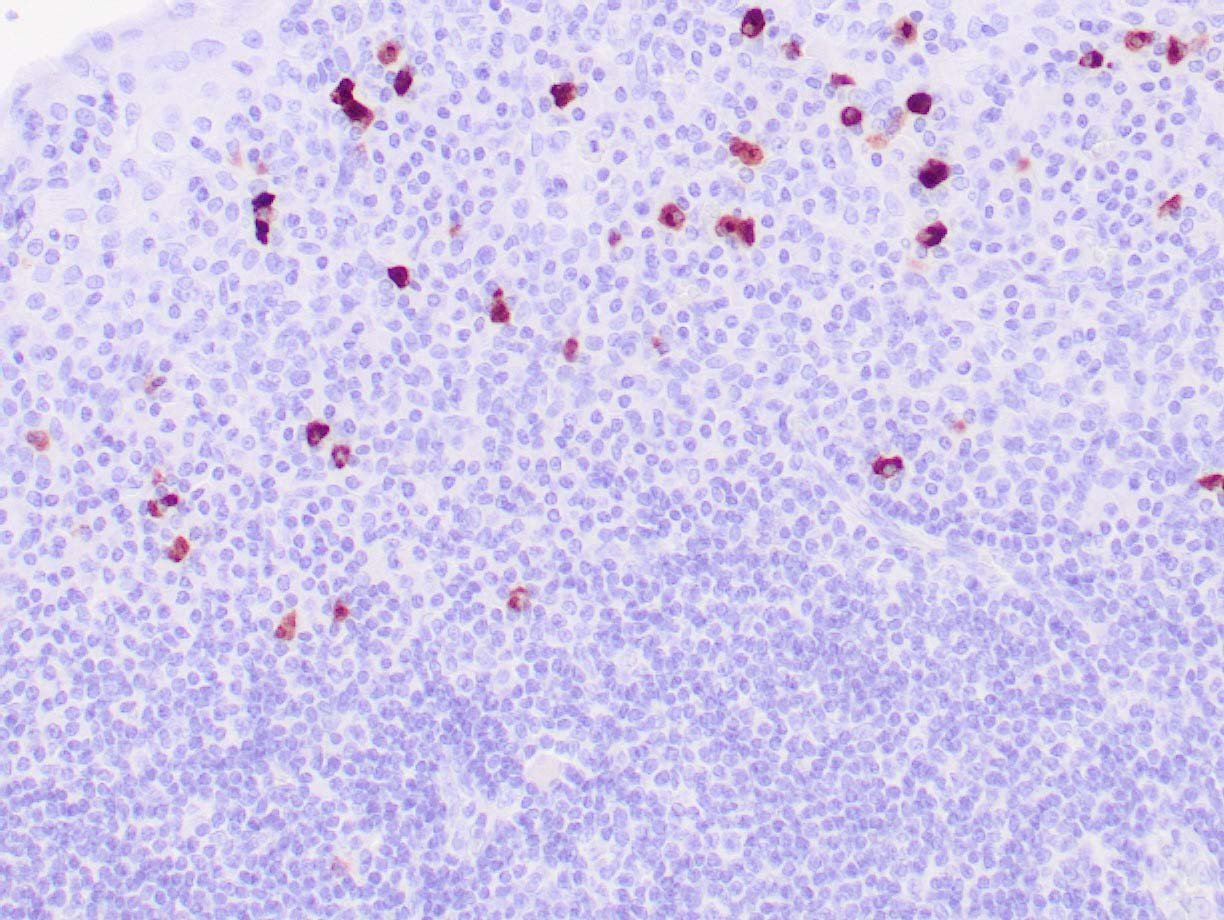 |
| Human salivary gland stained with anti-IgG4 antibody using peroxidase-conjugate and DAB chromogen. Note the cytoplasmic staining of plasma cells. |
Publications
| pmid | title | authors | citation |
|---|---|---|---|
| We haven't added any publications to our database yet. | |||
Protocols
| relevant to this product |
|---|
| IHC |
Documents
| # | SDS | Certificate | |
|---|---|---|---|
| Please enter your product and batch number here to retrieve product datasheet, SDS, and QC information. | |||
Only logged in customers who have purchased this product may leave a review.

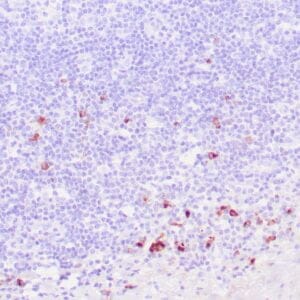

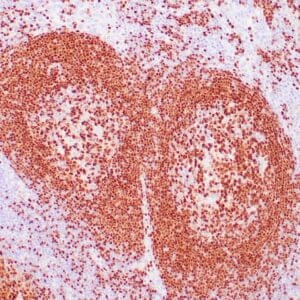
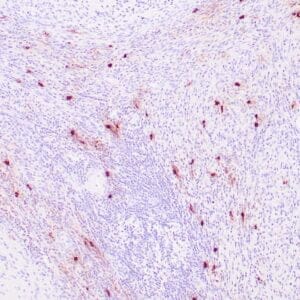
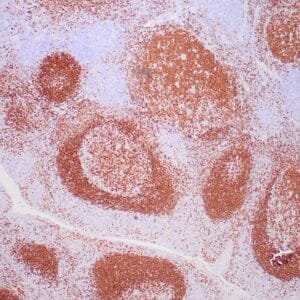


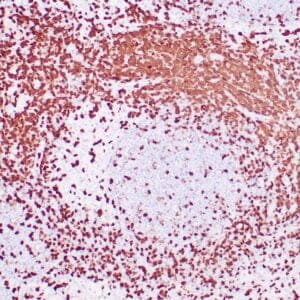

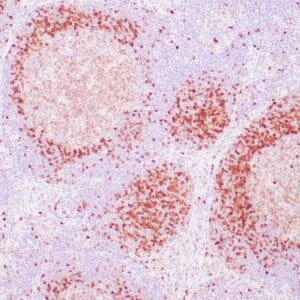

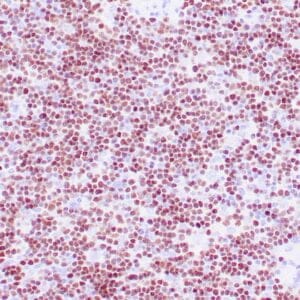
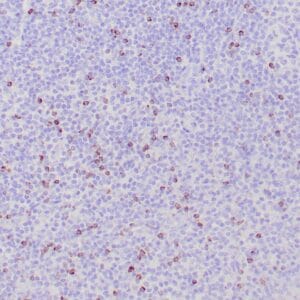
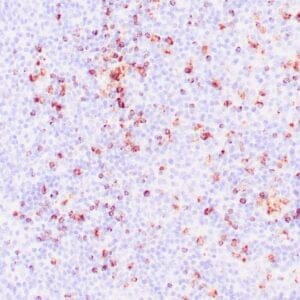
Reviews
There are no reviews yet.